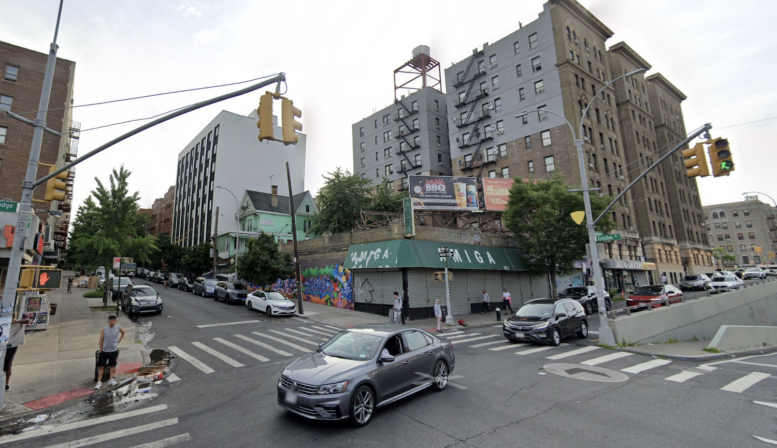The future of urban living is unfolding right before our eyes, and recent developments in the Bronx offer a compelling case study. The filing of permits for a new mixed-use building signals a shift towards transit-oriented and community-focused design.Explore the key trends in urban development shaping our cities and discover how these changes will impact your life.
Permits have been filed for a 12-story mixed-use building at 101 East Kingsbridge Road in Kingsbridge, The Bronx. Located between Creston Avenue and Grand Concourse, the lot is one block from the Kingsbridge road subway station, served by the B and D trains. moses Freund of The Vaja Group is listed as the owner behind the applications.
The proposed 120-foot-tall development will yield 48,095 square feet, with 47,952 square feet designated for residential space and 143 square feet for commercial space. the building will have 76 residences, most likely rentals based on the average unit scope of 630 square feet. The concrete-based structure will also have a cellar.
S. Wieder Architect is listed as the architect of record.
Demolition permits were filed in March for the single-story structure on the site. An estimated completion date has not been announced.
Subscribe to YIMBY’s daily e-mail
Follow YIMBYgram for real-time photo updates
Like YIMBY on Facebook
Follow YIMBY’s Twitter for the latest in YIMBYnews
.
Future Trends in Urban Development: A Deep Dive
Table of Contents
The recent filing of permits for a mixed-use building in the Bronx, as highlighted in the provided article, offers a glimpse into the evolving landscape of urban development. This project, with its focus on residential and commercial spaces near public transit, reflects broader trends shaping our cities.Let’s explore these trends and what they mean for the future.
Transit-Oriented Development: The Rise of Connected Living
The Kingsbridge project’s proximity to the subway station exemplifies the growing importance of transit-oriented development (TOD). TOD focuses on creating vibrant, walkable communities centered around public transportation hubs. This approach reduces reliance on cars, promotes sustainability, and enhances quality of life.
Real-life Example: Cities like Portland, Oregon, have successfully implemented TOD, resulting in increased ridership, reduced traffic congestion, and a more livable urban environment.Data from the city shows a significant decrease in car dependency in TOD areas.
Pro Tip: When considering a new home, prioritize locations near public transit. This not only saves money on transportation but also opens up opportunities for a more active and connected lifestyle.
Mixed-Use Buildings: Where We Live,Work,and Play
The inclusion of both residential and commercial spaces in the Bronx project is another key trend. Mixed-use buildings offer convenience and foster a sense of community by bringing together various activities under one roof. This model is notably appealing in dense urban areas where space is at a premium.
Did you know? Mixed-use developments often contribute to a more diverse and resilient local economy by supporting a wider range of businesses and services.
Sustainable Construction: Building for a Greener future
While the article doesn’t explicitly mention sustainability, it’s an increasingly critical factor in urban development. Future projects will likely incorporate green building practices, such as energy-efficient designs, renewable energy sources, and the use of sustainable materials. This shift is driven by environmental concerns and the growing demand for eco-pleasant living.
Case Study: The LEED certification program is a widely recognized standard for green buildings. Buildings that achieve LEED certification demonstrate a commitment to sustainability and often attract environmentally conscious residents and businesses.
The Role of Density: Maximizing Urban Space
The 12-story design of the bronx building reflects the need for increased density in urban areas. As populations grow, cities must find ways to accommodate more residents without sprawling outwards. this often involves building taller structures and utilizing land more efficiently.
Reader Question: How can cities balance the need for density with the preservation of green spaces and neighborhood character?
Affordable Housing: Addressing the housing Crisis
While the article doesn’t specify the affordability of the units, the broader context of urban development includes a growing focus on affordable housing. Cities are exploring various strategies to address the housing crisis, including inclusionary zoning, rent control, and the development of more affordable housing units.
data Point: According to recent studies, the lack of affordable housing is a major challenge in many major cities, contributing to homelessness and economic inequality.
The Future is Now
The trends highlighted in the Bronx project – transit-oriented development,mixed-use buildings,and a focus on sustainability – are not just future possibilities; they are already shaping the urban landscape.As cities continue to evolve, these principles will become even more critical in creating vibrant, livable, and sustainable communities.
What are your thoughts on these trends? Share your comments below and let’s discuss the future of urban living!


